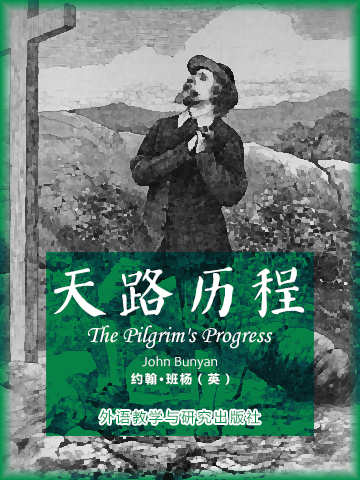这部英国古典文学名著被誉为“英国文学中最著名的寓言”。 十七世纪英国清教徒约翰·班扬因不信奉国教,被关押在狱十二年之久。《天路历程》作为他狱中心血凝成的杰作,被译成多种文字,在世界各地不断再版,家喻户晓的程度仅次于《圣经》。
《天路历程》为英国人班扬所著,该书借用了寓言和梦境的形式,书中的叙述者在梦中看到一个叫做“基督徒”的人正在读一本书,知道了自己居住的城市将遭天火焚毁,惊恐不已。这时一个叫“传道者”的人指点他必须逃离自己的故乡,前往天国。基督徒背负着世界的重担,从此踏上了艰难而勇敢的历程,为自己、也为他人寻找救赎。第二部分最早于1684年出版,写的是基督徒的妻子“女基督徒”和孩子们在一个叫做“无畏”的人的指引下,前往天堂的朝圣过程。
It is a Christian allegory written by John Bunyan and published in February, 1678. It is regarded as one of the most significant works of religious English literature, has been translated into more than 200 languages, and has never been out of print. Bunyan began his work while in the Bedfordshire county gaol for violations of the Conventicle Act, which prohibited the holding of religious services outside the auspices of the established Church of England. Early Bunyan scholars like John Brown believed The Pilgrim's Progress was begun in Bunyan's second, shorter imprisonment for six months in 1675, but more recent scholars like Roger Sharrock believe that it was begun during Bunyan's initial, more lengthy imprisonment from 1660–72 right after he had written his spiritual autobiography, Grace Abounding to the Chief of Sinners.
- The Author's Apology for his Book
- Page 10—Page 50
- Page 51—Page100
- Page101—Page150
- Page151—Page200
- Page201—Page250
- Page251—Page300
- Page301—Page350
- Page351—Page403
- The Conclusion
- 书评 写书评
- 笔记
-
书评加载中...













 京公网安备 11010802032529号
京公网安备 11010802032529号
笔记加载中...